- I still feel that tingling in my fingers, itching to write more.
- This is my sixth “/now” update, and I’m absolutely in love with this concept. It reduces a lot my need for publishing stuff on social media.
- Work
- Spending most of my time building Air Fiesta, a new project that evolved from a Google Earth experiment where people flew together in a hot air balloon, listening to local stories, radios and voting on where to go next (Quite chaotic). Now, it’s a multiplayer game for people who love traveling, still featuring a hot air balloon on Google Earth, which is just beautiful. This is an attempt to return to my roots in game development. Check posts related to that.
- Still working a bit on Smart Keys, but the project is profitable and basically runs on auto-pilot.
- Still helping Prospera Mental Health and Youper with tech challenges.
- Volunteering
- Sustainable Walnut Creek: We had amazing events this year so far, Earth Month, Exploration Station at the Library, and Community Forums.
- Learning
- Not learning anything new outside of tech. 🙁 I’ve paused my efforts to learn Korean for now. Hangul is so, so beautiful. And also quite hard. I already gave up on this goal for this year. But I feel I’ll return soon. Thank you, Ryan Estrada for these mnemonic drawings.
- Relaxing
- Saturdays you can find me having a delicious Omega at Rooted Poets Corner, at the beautiful PH Library.
- Trying to read less news and use social media less. Reading more and more books.
- We’ve been taking care of our friends’ pets a lot. We spent almost 3 months in SF taking care of some pets. I was missing so bad my dog in Brazil that we decided to pet sit around bay area using TrustedHouseSitters, this is so cool, we can meet amazing people, pets and also new cities.
- Exercise
- I’m not cycling anymore because I sold my bike :(, but I’m running and doing more indoor exercises guided by Pabllo Vittar. I set a goal for myself to exercise every day. Daily exercise is non-negotiable. It’s like brushing my teeth, maybe even more important. ‘NON-NEGOTIABLE, do you hear me, Dieguito?’
Air Fiesta Books Bragging Building in Public Cycling Food for thought Games Interviews Journal Lucid Dreaming Mental Health Movies Open Goals Poetry Productivity Quotes Ranting Smart Keys Sustainability Travel Youper
-
Journal: Oct 2025
-
Air Fiesta: When the Balloons Multiplied
There was a time when everyone shared a single balloon. That was Airtales, one collective flight drifting wherever the crowd decided. Democracy by wind. Chaos by design. It was beautiful, but also… a little limiting. People wanted to explore their own skies. This is why it started and how it ended.
That’s how Air Fiesta happened, a pivot, or maybe a parallel universe. Now every player has their own balloon. You can float above your neighborhood, drift over famous cities, or join in festivals with friends. No borders, no passport required.
Underneath it all, it still runs on the same energy: curiosity, community, and a touch of absurd optimism that maybe the world makes more sense from 300 feet up.

Nature and weather conditions are your challenges.
What’s New
Air Fiesta is built on Google Maps SDK, so what you see is the real planet. You can tune into local radio stations while you fly (because every city sounds different).
You can take photos of your journey, discover hidden treasures, and battle weather that’s way less forgiving than it looks. Gusty winds, thermals, fog, even flocks of birds (the kind of chaos that makes you laugh right before it throws you off course).
And what about the balloon festivals? They’re still happening. They will probably change into something simpler. Right now, it’s a scavenger hunt with virtual friends. But it seems a bit complicated, so it will likely become more like freely collecting hidden gems.
One big improvement was the mobile experience. The game is still based on web technology (ThreeJS), which is tricky to run on mobile, but you can try it out on the App Store or Play Store. Coming soon on Steam.
Why I Still Care About Radio
Radio’s the heartbeat of Air Fiesta. I’ve always loved it, the crackle, the local ads, the DJs who sound like they’ve seen things. There’s something deeply human about tuning into a city’s voice while you’re hovering over it.
I’m reaching out to stations now, (community, college, indie, public) to ask permission to float them inside the game. Because I want players to hear the places they fly over, not just see them.
If you run a station, you can see a preview of what that looks like:
See a balloon radio in New York and another in the Bay Area. This is more like a non-interactive mode where you can “watch” other players.Special thanks to Radio Browser technology for providing the geo-position of radios worldwide for free.
Where Air Fiesta Is Cancelled
Not everywhere is safe to fly.
Inspired by the Global Conflict Tracker and Freedom Flotilla, I mapped ongoing conflicts around the world: wars, occupations, humanitarian crises. The result was staggering. In those regions, Air Fiesta goes silent.
It’s not meant as protest or pity, more like a pause. When the world is burning, sometimes silence says more than scenery.
Maybe one day those places will light up again with music, laughter, and balloons rising together. Until then, the silence stays.
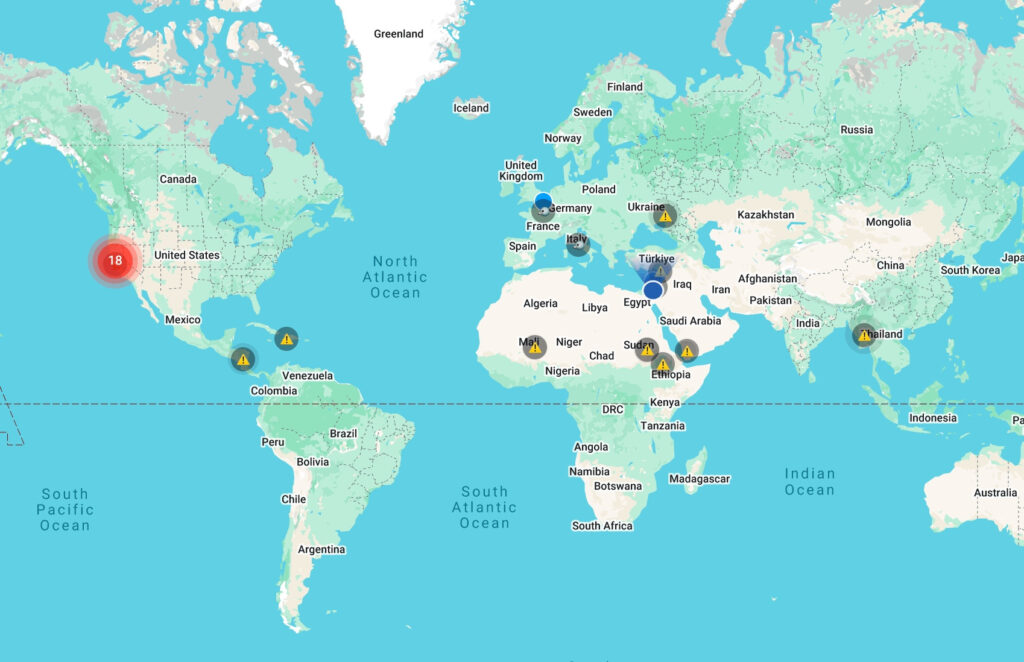
Feed and Gallery
Since Airtales has a feature that is quite unique (the camera), like a real balloon adventure, you can take pictures of your views. It’s no different here; people feel excited about doing that, so I keep it.
The improvement from the previous version is that you can now see pictures, messages, and other balloon interactions in a feed format.






What’s missing?
I think there are important pieces missing or not quite right. The story, for example, seems weak or almost nonexistent. Another important aspect is world-building. Currently, interactions with the world are almost zero. I think players should be able to build or change something in the real world. Right now, it’s almost like a ‘leave no trace’ approach, but it could be cool if they could move things around, clean the ocean, deliver letters, or even destroy borders :p
You can see follow the progress on Itch.io, for the first time I’m documenting the changelog there, it’s quite interesting.
The Sky Is the Limit
Air Fiesta isn’t about competition. There’s no score. No finish line. Just weather, music, and motion. It’s a little weird and a little hopeful, a floating experiment in what happens when you mix geography, sound, and strangers who want to explore together. This won’t trigger dopamine traps, and you won’t become addicted to it.
Maybe that’s the game I’ve always wanted to play: one where the world is the level, and connection is the win condition.
✈️ Play at airfiesta.fm or read the manifesto if you’re into that kind of thing.
Credits
Air Fiesta FM is a labor of love crafted by a small team (Diego and Leandra) and a generous community. This page recognizes the people, technologies, and resources that made it possible.
These are just a few of the people and companies that made this project possible.
- Inspired by Neal Agarwal‘s Internet Road Trip
- Many Sound effects by freesound_community from Pixabay
- Wind Sound by Mikhail from Pixabay
- Fire animation by Ben Hickling from OpenGameArt
- Radio Browser API by Alex Segler
- 3D Model modified from The Getaway by KevinAz61
- GLTF Editor by Andrew Varga
- Rendered by Three.js and stunning libs by Takkram and Su.
- Atmosphere rendering based on the @takram/three-atmosphere library
- Earth texture assets from NASA Visible Earth
- 3D tiles rendering from NASA-AMMOS/3DTilesRendererJS library and Google Photorealistic Tiles API
- Proofread by Smart Keys for Mac
- Flock Algorithm inspired by Tyler Roberts codepen.
- Loading Animation by Jon Kantner
- Control Buttons inspired by Prashant
- Elevation API by Open-Meteo
- Geocoding by BigDataCloud
- Google Maps SDK
- TTS by ElevenLabs
- Pair programmed with Windsurf
Special thanks
- Our early players and testers who shared feedback and found edge cases.
- The open source community for tools, libraries, and inspiration.
- Friends and family for the support during late-night builds.
-
Journal: Sept 2025
- I still feel that tingling in my fingers, itching to write more.
- This is my fifth “/now” update, and I’m absolutely in love with this concept. It reduces a lot my need for publishing stuff on social media.
- Work
- Spending most of my time building Air Fiesta, a new project that evolved from a Google Earth experiment where people flew together in a hot air balloon, listening to local stories, radios and voting on where to go next (Quite chaotic). Now, it’s a multiplayer game for people who love traveling, still featuring a hot air balloon on Google Earth, which is just beautiful. This is an attempt to return to my roots in game development. Check my build log.
- Still working a bit on Smart Keys, but the project is profitable and basically runs on auto-pilot.
- Still helping Prospera Mental Health and Youper with tech challenges.
- Volunteering
- Sustainable Walnut Creek: We had amazing events this year so far, Earth Month, Exploration Station at the Library, and Community Forums.
- Learning
- Not learning anything new outside of tech. 🙁 I’ve paused my efforts to learn Korean for now. Hangul is so, so beautiful. And also quite hard. I already gave up on this goal for this year. But I feel I’ll return soon. Thank you, Ryan Estrada for these mnemonic drawings.
- Relaxing
- Saturdays you can find me having a delicious Omega at Rooted Poets Corner, at the beautiful PH Library.
- Trying to read less and less news. But reading more and more books.
- We spent almost 3 months in SF taking care of some pets. I was missing so bad my dog in Brazil that we decided to pet sit around bay area using TrustedHouseSitters, this is so cool, we can meet amazing people, pets and also new cities.
- Exercise
- I’m not cycling or running much, but I am doing more indoor exercises guided by Pabllo Vittar. I set a goal for myself to exercise every day; daily exercise is non-negotiable. It’s like brushing my teeth, maybe even more important. ‘NON-NEGOTIABLE, do you hear me, Dieguito?’
- I still feel that tingling in my fingers, itching to write more.
-
A Drop Ripples Outward
When I first moved to San Francisco, I felt like just another tech bro leech, slurping up overpriced coffee, making rents go up, sucking the life out of the city, and giving absolutely nothing back. I had the whole starter pack: pitch deck, startup hoodie, a head full of “move fast” mantras that sounded deep at the time but now feel like bad Twitter threads. I told myself I was “creating value,” but honestly, I was mostly just creating slides.
Somewhere along the way, I bought into the idea that if what you’re doing isn’t “scalable,” then it’s not worth doing.
You know the voice:
“Damn Dieguito, you should be doing something globally impactful. Think local, act global.”
– My startup brain parasiteIt’s a catchy mantra, but sometimes it blinds me from the stuff right in front of me, the things that don’t scale, don’t monetize neatly, and don’t promise unicorn exits. That little whisper in my head can make me dismiss real things (like the people planting trees in our park) while I chase hypothetical millions.
Then, on a rainy Tuesday morning, I went to an event organized by Nadine Hammer (half meetup, half community forum) where folks gathered to talk about sustainability and a new city project. I’ll admit it, my expectations were low. Who the hell shows up on a random weekday morning to talk about creeks and climate? But surprise: a lot of people did. Passionate, curious, caffeinated people.
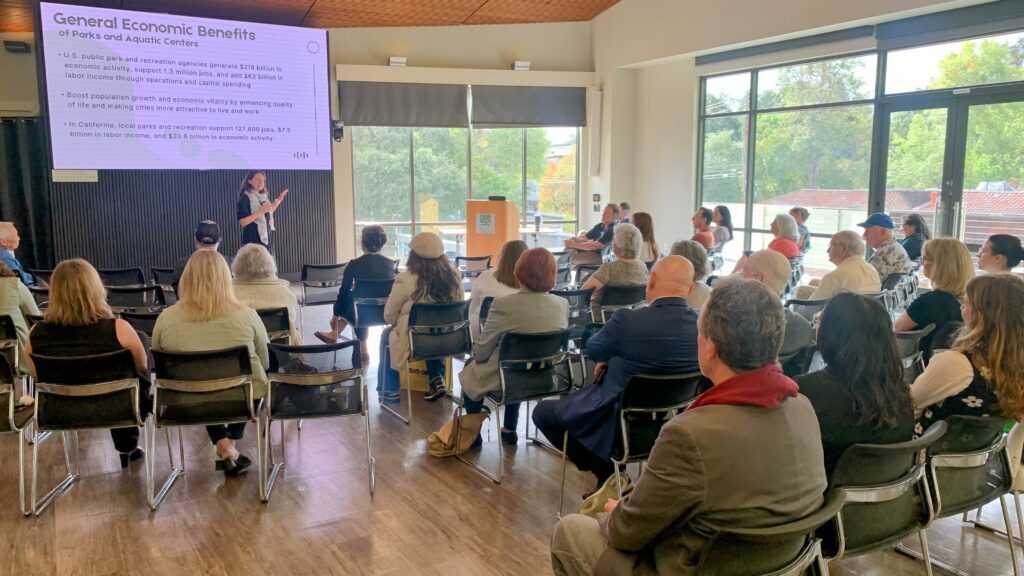
Event at the Walnut Creek Library. Coffee. Good company.
A first look at one of Walnut Creek’s biggest civic projects.Talking about coffee, you know that Starbucks gives free coffee for non-profit events? We got our portion of it. Nothing like free caffeine to fuel a conversation about creek restoration and circular economies.
So, I met (and re-met) folks doing the kind of work that doesn’t hit TechCrunch headlines. Hyper-local stuff (if that’s a category), like running a library program, upcycling fashion, or restoring a single overlooked stretch of creek. Tiny, unglamorous projects that keep the world stitched together in ways we only notice when they’re gone. These aren’t people waiting for Series A funding, they’re the ones showing up with gloves, clipboards, and a lot of stubbornness.
Take Civic Park in Walnut Creek. Have you been lately? Four volunteer-run organizations have been working there for years. Thanks to them, you can now actually see Walnut Creek’s creek (the few original pieces of it that survived). Years of persistence, patience, and picking up trash that no venture capitalist would fund. They didn’t need a growth strategy; they needed boots and trash bags.

Planting native species around the creek. 
Removing non-native things around the creek. 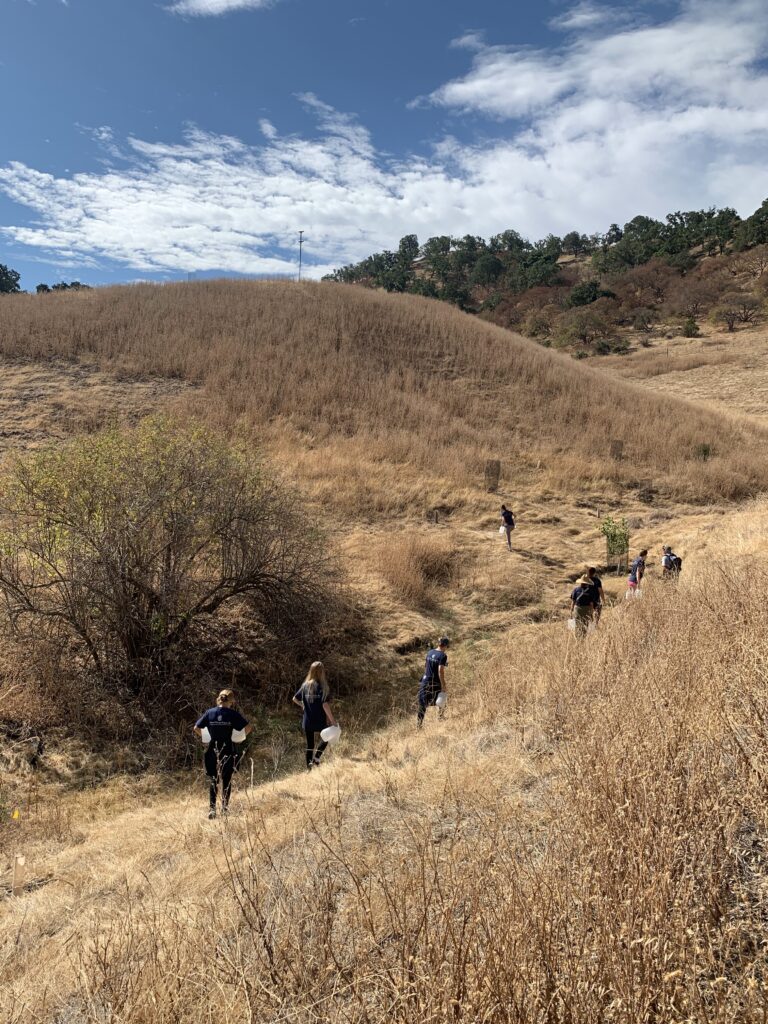
Teenage volunteers at Deer Lake, you heard right, teenagers. 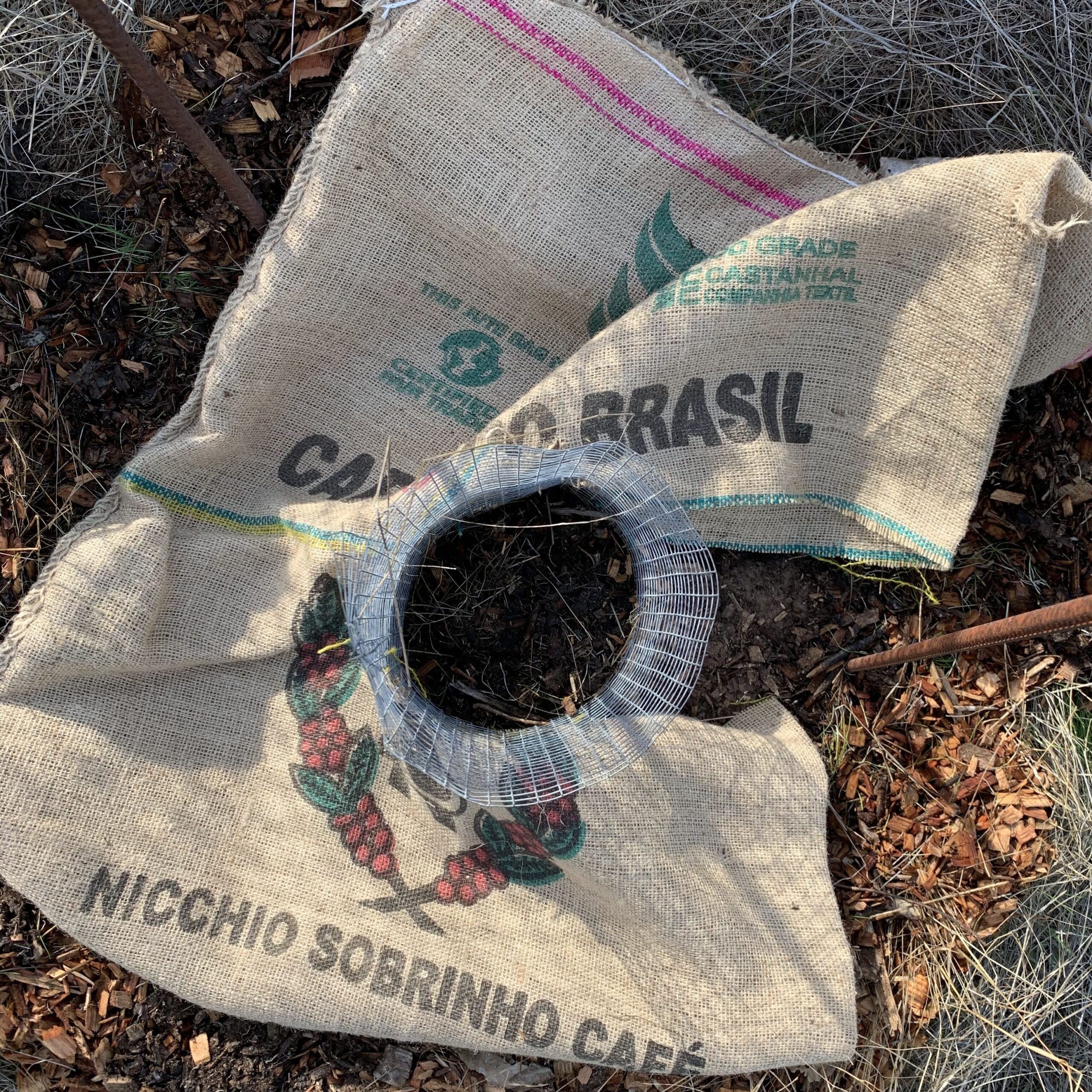
Coffee burlap and my sweat (both from Brazil), helping little oak trees survive the drought. One funny thing about this is that while I was helping a group of people plant and water oak trees in an open space restoration area around the city, the drought is so severe here that it’s really hard for those trees to survive. So my mind kept wandering.
How can we scale this? Can’t we be more efficient?
– Pa.. pa.. parrot brainI went back to the drawing board to come up with a solution that could make a huge impact in remote areas: automated irrigation drone stations powered by sunlight that charge and release drones 24/7 to collect water from a nearby pond and drop it on recently planted trees (inspired by Nathan’s project). The survival rate would increase greatly, and it could drastically reduce wildfires in the future, ping me if you have a billion-dollar check ;p
But something I was missing while dreaming about that is that part of the whole experience is to strengthen my bond with the city and make me pay more attention to my surroundings. Once you notice, you can’t un-notice. You start seeing these efforts everywhere. Someone teaching kids how to compost in a library basement. A group fixing up old bikes for free rides. Upcycling clothes workshop. Seniors everywhere picking up trail trash. None of it scales. All of it matters.
A small creek is where life starts. Water flows to rivers, to the bay, to the ocean. And, if you let it, it also flows to connections: to people, to ideas, to myself, to hope. It’s humbling to remember that something as overlooked as a trickle of water in a city park can link to everything downstream.

Walnut Creek’s creek That brings me hope that… local work ripples outward… and that ripple is global…
That these small, stubborn efforts I may dismiss as “too local” are the ones that might actually matter. The ones that sneak under the radar while I’m busy pitching “the next big thing.”
Not everything needs a hockey-stick growth curve. Sometimes the curve is just water bending around rocks in a creek, reminding us that slowing down, changing course, and flowing steady can be its own kind of success. And honestly? That’s enough.
-
Airtales: When the Balloon Landed

The last screenshot Airtales was never meant to last forever. I even had a line on the roadmap asking when and where the balloon would land. Still, it drifted across Google Earth like a stubborn daydream, a collective ride where strangers became crew.
Fifty days in the sky
I spent about fifty days building it, then another fifty days watching it float. In that time, 8,606 people climbed aboard. At one point 167 players were trying to steer it at the same time. Along the way, 145 photos were snapped, 234 local radios played, and the balloon wandered across thousands of virtual miles.
I had a blast, and also a fair amount of frustration, making it. Game development is nothing like building an app. Apps usually have a problem to solve. Games? Unless boredom is a problem (which I don’t agree), they exist for entertainment. That makes the process slippery. You build something, test if it feels fun, throw it away when it doesn’t, or let it spark a new idea when it does.
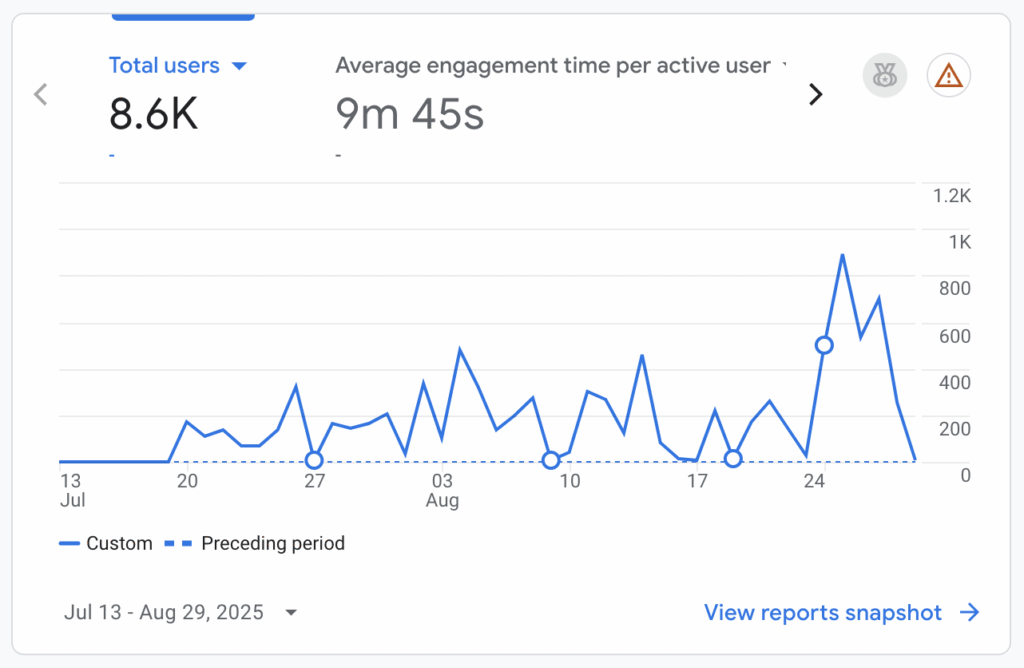
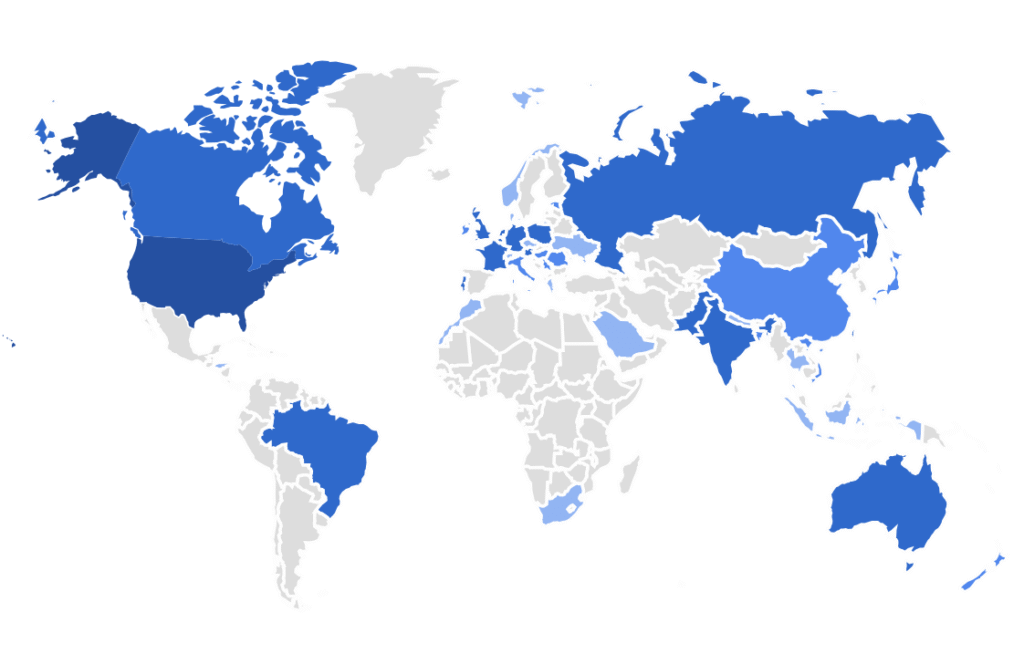
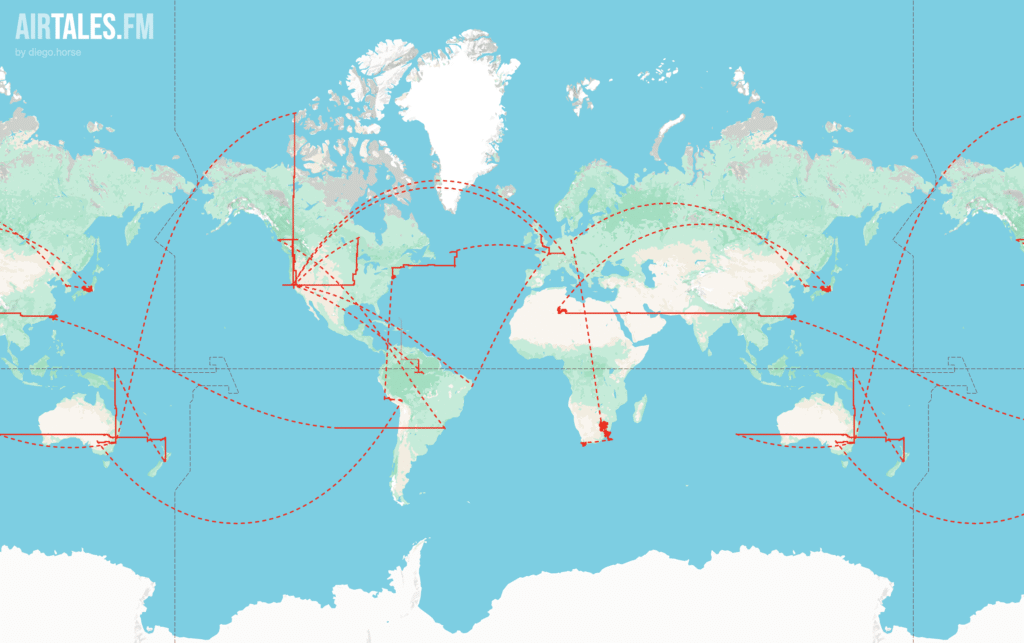
The balloon’s messy handwriting across the sky, fifty days of drifting together. What I Learned
- Collective chaos. Everyone steering the same balloon at once was as wild as it sounds. Fun for a while, then pure chaos. The most requested feature was obvious: give people their own balloons.
- Two kinds of players. Some wanted to navigate carefully, to reach specific places. Others were content to just watch. Like social media, there were pilots and lurkers.
- Screenshots became souvenirs. The photos people shared blew me away. Taking a picture of a virtual trip sounds silly, yet some were stunning. In Airtales they felt like postcards from a shared dream. Roblox and Steam also encourage capturing gameplay, but in Airtales it felt more like postcards from a shared dream.
- Google Maps hurdles. Getting Maps to play nice with the game was tough. I liked the final solution until I learned caching map tiles is against Google policy. That one stung.
- Twitch experiments. I hooked Twitch chat into the game so players could teleport the balloon or send messages that got read aloud. I streamed some flights too. But requiring a Twitch account kept most people away. I never wanted to build my own chat system, since moderation is a nightmare, but this wasn’t the answer. Copyright takedowns on radio streams didn’t help either.
- Local radios. These were huge for the vibe, and even part of my distribution strategy. I even reached out to a few stations and some shared it on their socials. That felt like a win.
- Stories in the sky. I tried mixing in book excerpts and AI-generated geo-stories about migration, philosophy, global unity. I hoped they would add poetry to the ride. They never really fit.
- Web tech has grown up. Browser-based 3D is powerful now. Still clunky on mobile, but impressive nonetheless.
Travel Log
A collection of snapshots from my journey and players who turned their virtual flights into postcards. The gallery is less about graphics and more about the human impulse to document a journey, even when it happens on a digital map.
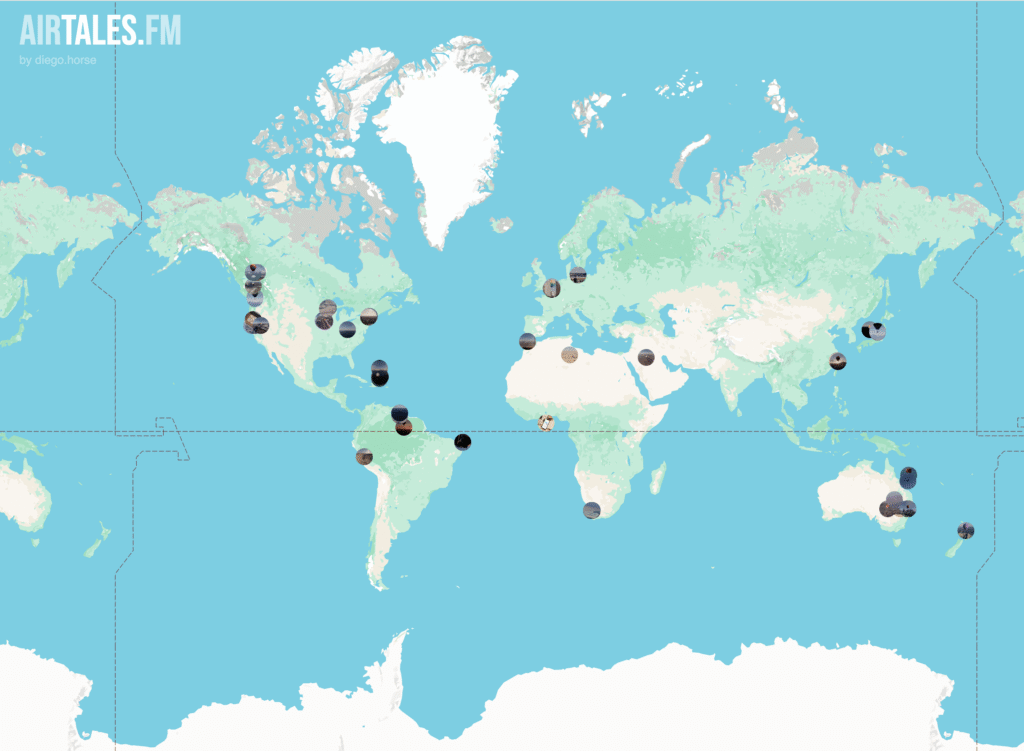














Why It Mattered
Airtales was an experiment. I wanted to see if I still enjoyed game development, explore new stacks, find out which platforms are thriving, and hear from real players. By that measure, it worked. It reminded me why I like building things that don’t fit neatly into categories. It gave me a reason to keep going.
So here’s to what comes next. I’ll see you floating around the world, each of us in our own balloon, part of one oversized fiesta in the sky.
